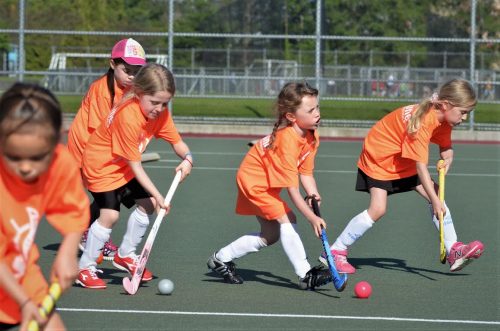Sport for Life Leaders School transforms West Vancouver Field Hockey Club
 There are more than 1600 athletes registered in the West Vancouver Field Hockey Club’s Spring League program, and none of them are getting cut from their teams. With a focus on developing skills and having fun, this organization has decided to side-step the traditionally competitive elements of their sport to make sure everyone is included.
There are more than 1600 athletes registered in the West Vancouver Field Hockey Club’s Spring League program, and none of them are getting cut from their teams. With a focus on developing skills and having fun, this organization has decided to side-step the traditionally competitive elements of their sport to make sure everyone is included.
“We face a lot of pressure from parents and coaches. I work in this field and I understand the research behind avoiding early specialisation, but the vast majority of parents are used to seeing their children in a early tiered sport system,” said Emma Gibbons, executive director of the club.
“As a board we’re constantly looking at our philosophy and our approach, and at some point we realized we had to do a better job of communicating to parents why this is our philosophy and the best way to go. The question was: ‘how do I get this message out to 3000 parents?’”
That’s where Sport for Life Leaders School came in. Gibbons applied to work on a communication strategy, and was accepted into the program. She wanted guidance on how to effectively engage with her club, not just sending out email blasts or relying on fieldside conversations. Working with mentors, she came up with a plan to experiment with different communication channels.
Her journey began at the Sport for Life Summit, where she met other members of her cohort and was partnered with a participant from a different organization. She found the exchange of ideas, and the monthly meetings, to be hugely beneficial as she got to work. Eventually she created a comprehensive communication program for club parents as well as a detailed report that analyzed its success and is a recipe for other sport clubs to follow.
“This isn’t rocket science, but when you’re working on a club level it can be quite isolating. You feel like a lone voice. So it’s good to connect with other people who are working in the same area and to see and hear what they’re doing.”
Currently, her club is designed so players could join a team at U-6 and play with the same team through to U-18. That’s how she wants it to stay.
As part of her project, Emma introduced a weekly challenge where her members learned about different Sport for Life topics, such as multisport or physical literacy, and introduced player matrixes that outlined the skills the athletes were developing. Then she distributed a survey, which came back with increased satisfaction scores.
“Through this process we also ended up teaming up with new partners we wouldn’t have met otherwise, and we seemed to get a lot of attention from the local sport community.”
